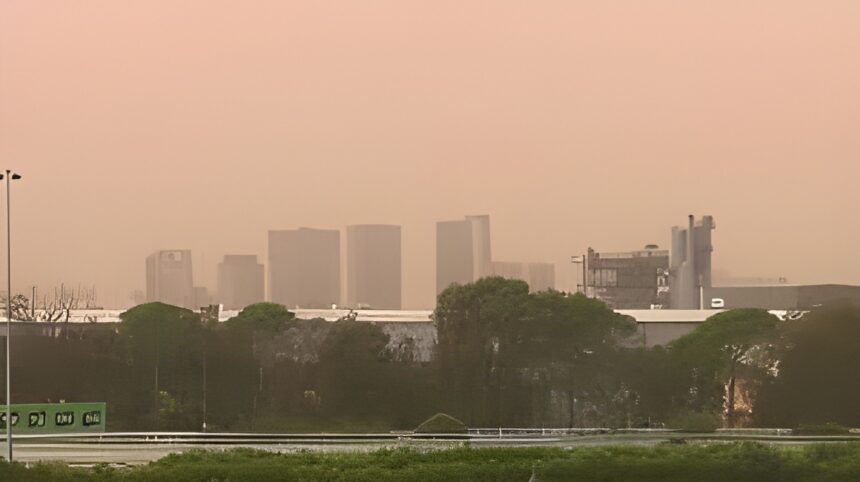Sydney Wakes to Thick Haze and Disruption
Sydney woke up under a thick blanket of dust and airborne particles on Tuesday morning, as a powerful dust storm swept across Greater Sydney. This sudden environmental event has severely impacted air quality, prompting urgent health warnings and significant disruptions in the city.
Landmarks Disappear in the Storm
Iconic landmarks such as the Sydney Harbour, city skyline, and even the distant Blue Mountains vanished under the thick haze. Residents faced unusually poor visibility and were urged to take serious precautions to protect their health.
Urgent Health Alerts from Authorities
The NSW Health department immediately issued warnings, especially for those with asthma, respiratory illnesses, or other health vulnerabilities. They advised the public to stay indoors, avoid outdoor physical activity, keep windows tightly closed, and use damp cloths to cover noses and mouths if venturing outside was unavoidable.
The Danger of PM10 Particles
Sydney’s dust storm is measured using PM10 levels — particulate matter with a diameter of 10 micrometres or less. These tiny particles are harmful because they can easily penetrate the lungs and cause respiratory issues.
What Are PM10 and Why They Matter
“PM10 are particles in air with a diameter of 10 micrometres or less,” NSW Health explains. “PM itself is short for ‘particulate matter’, another term for particles. They can include dust or sea salt, as well as smaller particles generated from combustion processes such as vegetation fires, motor vehicles and industrial sources.”
Respiratory Risks and Vulnerable Groups
Such particles are not just a nuisance; they can cause difficulty breathing, worsen asthma or chronic bronchitis symptoms, and irritate the eyes, nose, and throat. The short-term health impacts pose a significant risk, especially for sensitive groups.
Pollution Levels Surpass Global Benchmarks
On Tuesday morning, between 8 am and 9 am, PM10 levels in Sydney surged dramatically. Some areas experienced readings above 600μg/m3, with Prospect reaching an alarming 693.3μg/m3. To put this in perspective, Delhi — often ranked among the most polluted cities worldwide — had a PM10 reading of 107μg/m3 at the same time.
Urgent Need for Protective Measures
This extraordinary spike illustrates the severity of the dust storm engulfing Sydney and underlines the urgent need for protective measures to safeguard public health.
Long-Term Concerns for Respiratory Health
Dust storms like this not only disrupt daily life but also raise concerns about long-term respiratory health for many Sydneysiders.






